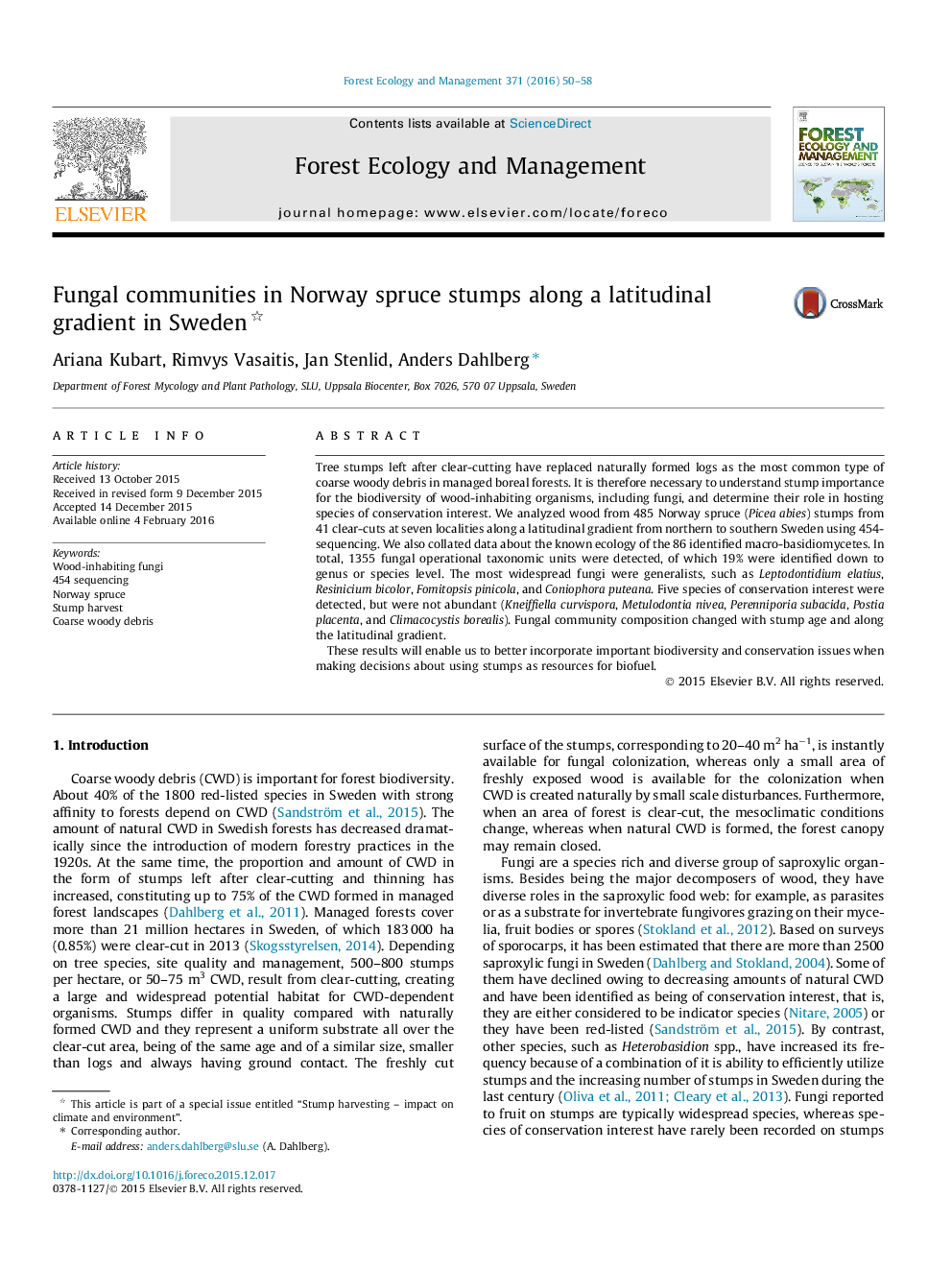| کد مقاله | کد نشریه | سال انتشار | مقاله انگلیسی | نسخه تمام متن |
|---|---|---|---|---|
| 85914 | 159149 | 2016 | 9 صفحه PDF | دانلود رایگان |
• Stumps host species-rich fungal communities, comparable to richness found in logs in previous studies.
• Stumps form a favorable substrate for pioneering fungal species, including numerous root-rot fungi.
• Few records of fungal species of conservation interest were made in stumps.
Tree stumps left after clear-cutting have replaced naturally formed logs as the most common type of coarse woody debris in managed boreal forests. It is therefore necessary to understand stump importance for the biodiversity of wood-inhabiting organisms, including fungi, and determine their role in hosting species of conservation interest. We analyzed wood from 485 Norway spruce (Picea abies) stumps from 41 clear-cuts at seven localities along a latitudinal gradient from northern to southern Sweden using 454-sequencing. We also collated data about the known ecology of the 86 identified macro-basidiomycetes. In total, 1355 fungal operational taxonomic units were detected, of which 19% were identified down to genus or species level. The most widespread fungi were generalists, such as Leptodontidium elatius, Resinicium bicolor, Fomitopsis pinicola, and Coniophora puteana. Five species of conservation interest were detected, but were not abundant (Kneiffiella curvispora, Metulodontia nivea, Perenniporia subacida, Postia placenta, and Climacocystis borealis). Fungal community composition changed with stump age and along the latitudinal gradient.These results will enable us to better incorporate important biodiversity and conservation issues when making decisions about using stumps as resources for biofuel.
Journal: Forest Ecology and Management - Volume 371, 1 July 2016, Pages 50–58
